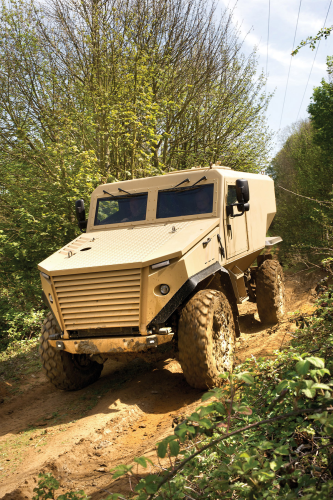
The Ocelot has been designed to meet the UK Ministry of Defence (MoD) LPPV programme requirements and is reported to provide unprecedented levels of blast protection for a vehicle its size.
The UK MoD has contract the Ocelot's developer UK based FPE, a subsidiary of Force Protection Industries Inc of the USA, to produce the Ocelot. FPE has an initial order for 200 vehicles to begin delivery in 2011 and a follow-on order of similar size is expected.
The crew compartment of the Ocelot vehicle is manufactured using US company AGY's S-2 Glass in an epoxy prepreg. This composite 'protection pod' dampens and absorbs incoming blast waves much better than metallic crew compartments.
The MoD’s LPPV vehicle programme requires a significant level of armouring to protect against ballistic, mine and roadside bomb threats and AGY's S-2 Glass reinforcing fibres help to achieve this, reports Drew Walker, Vice President of Sales and Marketing at AGY.
"S-2 Glass fibres are a high performance fibre glass offering significant improvements in performance over traditional E-Glass fibres," Walker explains. "The composite can be built to provide structure and has the ability to handle the mechanical aspects of an advanced vehicle design. In this particular case, it also offers significant protection for both blast and ballistic testing at weights much lower than traditional metallic materials.”
In traditional light armoured vehicles, a metallic skin is backed by a composite spall liner to mitigate the behind-armour effects in an over-match situation.
"In the Ocelot, because the hull is composite, there is a greatly reduced spall liner requirement, further reducing weight," notes Walker. "The choice of materials in the composite shell also affords a high level of protection against fire, smoke and toxicity that is not inherent in many of the more expensive high performance fibres."



